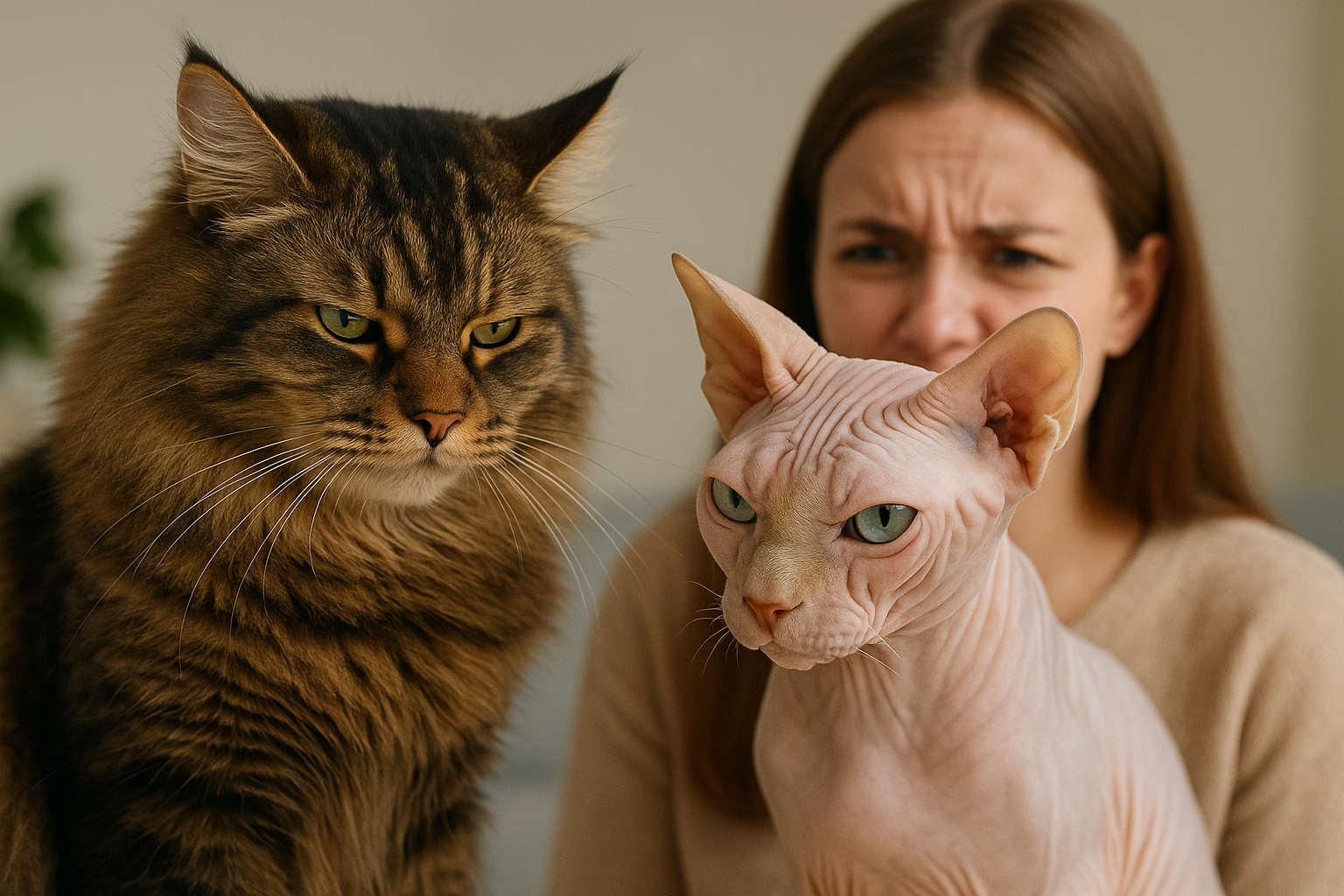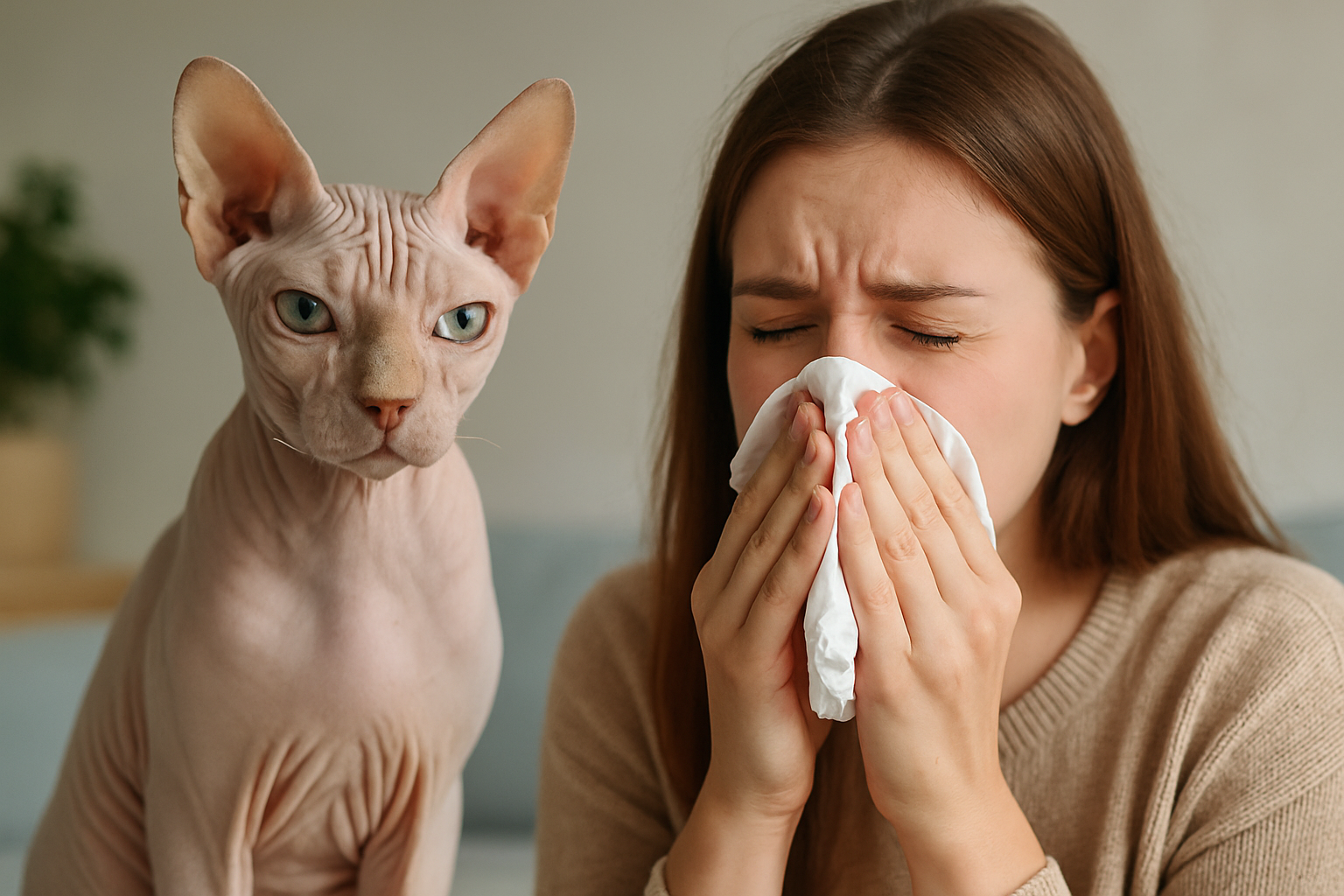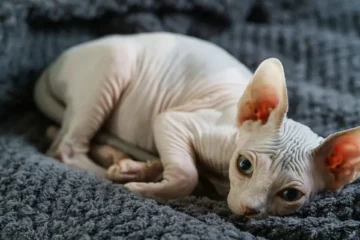So you’re sneezing around cats but absolutely love them? You’ve probably thought about getting a hairless cat like a Sphynx, thinking “no hair, no problems,” right? Well, I hate to break it to you, but it’s not that simple. Let me explain what’s really going on with hairless cats and allergies.
Here’s the Real Deal About Hairless Cats and Your Allergies
Sphynx cats aren’t actually hypoallergenic. I know, I know – it sounds crazy since they don’t have fur. But stick with me here, because the whole allergy thing with cats is way more complicated than most people think.
The thing is, most folks believe cat hair is what makes them sneeze and get watery eyes. But that’s not really what’s happening at all.
It’s Not the Hair That Gets You – It’s Something Else Entirely
Meet Fel d1: The Real Troublemaker
Here’s what actually causes your cat allergies: a tiny protein called Fel d1. This little troublemaker is what sets off allergic reactions in about 9 out of 10 people who are allergic to cats. And guess what? It’s not in the hair at all.
This protein shows up in:
- Cat spit (yeah, their saliva)
- The oils in their skin
- Their pee
- Dead skin flakes (we call this dander)
When cats lick themselves clean – which they do all day long – they’re basically coating themselves with this allergy protein. Then when they shed hair or skin, those tiny particles float around your house and land on everything.
Why Hairless Cats Still Make You Sneeze
Here’s the kicker: Sphynx cats make just as much Fel d1 protein as regular cats. Even without fur, they still have:
- Oily skin: Actually, they produce MORE skin oils than furry cats because they need extra protection without hair
- Saliva: They still groom themselves constantly
- Skin flakes: They’re always shedding tiny bits of skin, just like we do
So unfortunately, a hairless cat can still trigger your allergies just as much as a fluffy Persian.
What Makes Some Cats Worse Than Others

Not all cats are equal when it comes to causing allergies. Here’s what makes a difference:
Boys vs. Girls (And Getting Fixed)
- Male cats that aren’t neutered are the absolute worst for allergies
- Female cats and neutered males produce way less of that pesky protein
- Getting a male cat neutered can cut allergen production in half
Age Matters Too
- Baby kittens don’t produce much of the protein yet
- Adult cats are at their peak for allergen production
Every Cat is Different
Some cats just naturally make less of the allergy protein than others. It’s like how some people are naturally taller – it’s just genetics.
Making Life Easier If You Get a Hairless Cat Anyway
Look, Sphynx cats might not be hypoallergenic, but some people with allergies do find them a bit easier to live with. Here’s how to make it work:
Give Them Regular Baths
Since hairless cats get oily and collect allergens on their skin, giving them a bath once a week can really help. Use a gentle, hypoallergenic shampoo. The good news? It’s way easier to bathe a hairless cat than trying to wash a long-haired Persian!
Keep Your House Super Clean
- Get a good air purifier with a HEPA filter
- Vacuum all the time (seriously, like every other day)
- Wash your sheets and couch covers weekly
- Keep the cat out of your bedroom if possible
Daily Maintenance
- Wipe down your Sphynx with pet wipes between baths
- Keep the litter box spotless
- Try those allergen-reducing sprays made for pets
Better Options If You Really Need a Low-Allergen Cat
If you absolutely need a cat that’s easier on your allergies, these breeds might work better:
Cats That Actually Produce Less Allergens
- Siberian cats: Weird but true – despite all that fluff, they often make less of the allergy protein
- Balinese cats: They look like long-haired Siamese but many produce fewer allergens
- Russian Blue cats: These gray beauties are known for being gentler on allergies
Cats That Don’t Shed Much
- Devon Rex: They have this weird, curly coat that barely sheds
- Cornish Rex: Similar deal – curly, sparse fur that stays put
Test Drive Before You Buy
If you’re dead set on getting a Sphynx despite your allergies, please do this first:
- Hang out with Sphynx cats for several hours at a time
- Visit different Sphynx cats – not just one
- Talk to your doctor about managing your allergies
- Consider allergy meds or shots
The Bottom Line on Hairless Cats and Your Sneezing
Here’s the truth: Sphynx cats aren’t the magic solution for cat allergies that everyone thinks they are. They still make all the same allergens as regular cats.
That said, some people do find them a bit easier to deal with. Without all that fur flying around, it can be simpler to keep allergens under control with regular baths and cleaning.
But don’t kid yourself – no cat is 100% allergen-free. Even within the same breed, one cat might barely bother your allergies while another has you reaching for the tissues constantly.
Should You or Shouldn’t You?
Before you fall in love with a hairless cat, think about:
- How bad your allergies really are
- Whether you’re up for weekly baths and constant cleaning
- If you can handle allergy meds or treatments long-term
- That hairless cats need special care (like sunscreen!)
The real secret to having a cat with allergies isn’t finding a magical hypoallergenic breed – it’s being super dedicated to managing the allergens. Some people make it work beautifully with the right game plan and realistic expectations.
If you’re determined to share your life with a feline friend despite allergies, team up with your doctor and a vet to figure out a plan that keeps both you and your future cat happy and healthy. It might take some work, but for true cat lovers, it’s often worth every sneeze.




